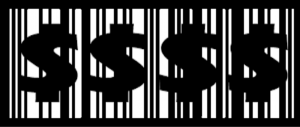1. Where Will You Be Tracking Items?
First, get a handle on where you will be using your barcode or RFID tags. Line of sight is required to read a barcode which can be a good thing or a bad thing. If your barcodes have the potential to be covered with dirt and the elements, RFID may be the way to go. However, if you need to work in extreme temperatures barcode labels will always work, whereas RFID only functions between -20°C and 70°C.
2. What Will You Be Tracking?
Depending on the material of the item you are trying to track, using an RFID tag may be problematic. If your materials are metal, a basic RFID label will not work. A foam attachment or specialized tag will be needed to allow it to function. Liquids and other outside radio frequencies can also interfere with a good reading. Barcodes, on the other hand, just need a place to be attached.
3. Are You Worried About Security?
If you are trying to deter theft, RFID is probably where you want look. RFID tags can be monitored by readers surrounding doors or passageways. The RFID tag could even be read if an item were hidden in a backpack! This is not the case for barcodes. RFID data can also be encrypted and password protected making them very difficult to counterfeit. Barcodes, on the other hand, are easy to both reproduce and replicate.
4. What Capabilities Do You Need?
RFID tags have a longer read range than barcodes – up to 30 feet for RFID without batteries and much longer using batteries. Barcodes will max out at a few feet, except for very large barcodes with specialized readers. RFID tags can be read much faster and provide the ability to read multiple tags at the same time. Barcodes can only be read one at a time. When reading RFID tags, it can be difficult to tell exactly which tag is being read if multiple tags are close together. With a barcode, you can see where the laser is pointing and know exactly which item is being read. Barcode data may only be read, where an RFID’s memory can be both read and written to.
5. What Is Your Budget?
Barcodes and RFID each have their sweet spot with respect to what they are attached to. If you are tracking items under a buck, it might be hard to justify a $2 RFID tag. If you need to secure a $3000 piece of equipment, the price of RFID might be negligible. While barcodes are significantly cheaper than RFID tags, your current costs of doing business must to be taken into account as well. RFID has incredible potential to increase efficiency and productivity, saving you money. For example, if you can reduce your work time by 50%, an RFID system can pay for itself very quickly, in ways that might not be possible using just barcodes. While RFID may be more expensive initially, it is very important to look at the return on investment as well as what your goals are.
In Conclusion
RFID may have its advantages over barcodes, but the choice may not be black or white. Barcodes are not yet a thing of the past and for many businesses, they provide exactly the right mix of cost and function. Take into consideration what your exact needs are before making a decision, and remember that RFID is not for everybody and in some cases might be overkill. Good luck and happy tracking!
By David Carta, Telaeris CEO & Liz Womack, Telaeris Marketing Analyst


Comments are closed.